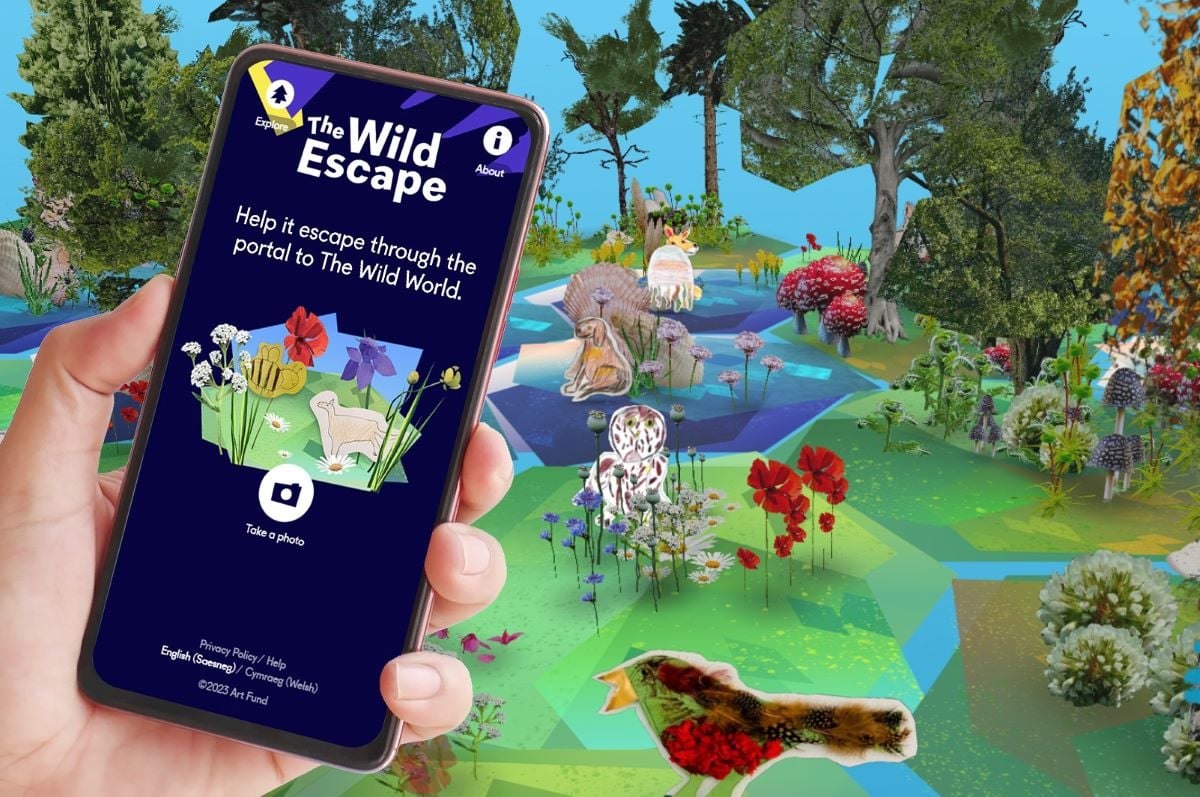
The Wilde Escape from Preloaded
An epic collective digital artwork celebrating UK wildlife
At a time when museums are facing increasing external pressures, Mike Keating shares how a major new project has inspired children to respond to the UK’s natural environment.
The Wild Escape is Art Fund’s major new project uniting hundreds of museums and schools in a celebration of UK wildlife and creativity. Its aim is to inspire children to visit museums and respond creatively to the UK’s natural environment by looking for animals featured in museum collections and creating their own wildlife artworks.
The Wild World is an epic-scale digital artwork featuring animals imagined by children all over the country, inspired by the collections of hundreds of UK museums. The aim is for children to take part in museum or school events, create a creature, and add it to The Wild World.
At Art Fund, we wanted to support museums with their activity for The Wild Escape, at a time they’re facing increasing external pressures. We also wanted to connect schools and museums, and to do that we had to create something exciting for children. At the same time, we also wanted to showcase the events museums were running across the UK.
After testing these ideas with museum partners, we created resources for activities and workshops, and we worked with creative studio Field to create a brand identity and microsite that could show a teacher or a museum professional how they could get involved.
But as we worked on these resources, it became clear that we could dream a little bigger, and with support from Arts Council England we were able to work on The Wild World with award-winning games studio Preloaded.
Embracing an agile way of working
It was a completely new project for Art Fund. While we’ve run big digital projects in the past, we haven’t worked on anything that feels more like a game than a website, especially one focused on children. This was also our first time working with these suppliers, and they also had to work together, to make sure the user journeys that took audiences of both children and museum professionals across three different digital spaces were quick and clear.
We had to learn quickly. Embracing an agile way of working, we had a vision for the project and a budget, but we had to learn to sit with a degree of uncertainty around how far that budget would take us before our deadline.
To simplify the project, we split it into parts: the ‘front end’ experience of The Wild World, where audiences can add a creature or explore, and the ‘back end’ experience, where we can keep the experience safe and keep track of how many creatures are in there.
At the same time, we were producing events content for the Art Fund website and adding resources to the microsite Field had built.
With our internal team, we assigned one person to each of these areas, to make it clear who you needed to talk to about what throughout the course of the project.
Building consensus
To start, we mapped out the functions of each of digital experience: which user group (or persona) was the microsite for, who was the digital artwork for, who was the events content for? Then we asked what they would be trying to do, and finally, how we could pass people from one site to the next.
We transformed something that sounded really complicated to say out loud and produced a user journey map that made clear what work needed to be done, and for who. This helped build consensus internally with what we were trying to do.
We brought external expertise to sense check our work and assumptions and Unthinkable Digital proved valuable in asking the difficult questions that lead to the best answers.
We then broke the work into user journeys or tasks users needed to complete. Next we worked in sprints through the design and build phases, starting a sprint with – for example – a list of 20 things we hoped to see by the end, sometimes emerging with 15, sometimes 25.
Some weeks were good, some less so and the variable pace made it difficult to show people what The Wild World was and how it would work.
Children’s feedback essential
The success of The Wild World hinged on strong user research. Working with Preloaded, we held user research sessions with children – a first for us – and they told what didn’t work.
It was fascinating to see how differently they use technology, gleefully skipping over instructions and getting straight into the world, learning by finding out how to bend or break it. But after a few iterations with different groups of children, we had something we were both proud of and that was (almost) child-proof.
The Wild World is live now until the end of July. You can add drawings created at your museum or check out some of the thousands of amazing creatures created by children across the UK. Museums can also upload groups of creatures created in activities and workshops by emailing [email protected].
If your museum isn't taking part in The Wild Escape yet, there’s still time. We have free resources [thewildescape.org.uk] to help you plan activities, promote your event and more.
Mike Keating is Head of Digital Services at Art Fund.
![]() @artfund | @mkeating121
@artfund | @mkeating121
This article, sponsored and contributed by Art Fund, is part of a series sharing information and expertise to support museums and galleries to recover from the pandemic and develop audiences for the future.

Join the Discussion
You must be logged in to post a comment.